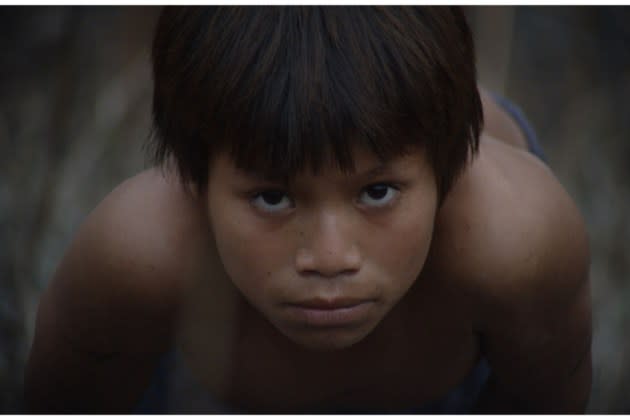Directors of IDFA Award Winner ‘Canuto’s Transformation’ on the ‘Romanticization’ of Indigenous Stories, Film’s Political Roots (EXCLUSIVE)

It took director Ariel Kuaray Ortega almost two decades to be able to tell a story he’s heard throughout his entire life: the strange tale of Canuto, a man who mysteriously transformed into a jaguar and then died a tragic death. The resulting film, “Canuto’s Transformation,” had its world premiere at the International Documentary Film Festival Amsterdam, where it took the award for best film in the Envision Competition and the outstanding artistic contribution award.
The film, co-directed with Ortega’s longtime creative partner Ernesto de Carvalho, mixes documentary and a re-enactment of the story of Canuto with all parts played by villagers from a Mbyá-Guaraní community nested on the border between Brazil and Argentina.
More from Variety
Speaking exclusively with Variety ahead of the film’s world premiere at the festival, Ortega said: “When I first mentioned this story to Ernesto back in 2009, I didn’t know the format I wanted for this film. We kept changing it because we were not sure how the local people would welcome strangers into the village. We also didn’t have many resources to re-enact the story with actors, so we had to work with what we had.”
Carvalho is no stranger to the complexities of collaborating creatively with Indigenous tribes, having worked with Vídeo nas Aldeias (Video in the Villages), a well-established cultural NGO enabling Indigenous storytellers through filmmaking workshops, since 2007.
“It’s not education per se, it’s a methodology,” said the director of the work of the organization. “We are immersed in these communities during lengthy stretches of time and don’t ever require participants to leave their villages to go into town. It’s an everyday process of mixing cinema with the local routine. The films we made have circulated festivals, screened on television and acted as a window to the Indigenous reality in Brazil.”
“When we first began doing this work, the expression Indigenous Cinema wasn’t established yet. Today, it is not only a thing but a reference and an example followed by others in Latin America and throughout the world,” added Carvalho of the work of Vídeo nas Aldeias, with Ortega interjecting to praise the NGO and underlining how people often “romanticize Indigenous Cinema.”
“We are many tribes, making many types of cinema. Just because I am Guarani, people expect me to make films about the beauties of the land, our music, the intricate headdresses… There’s an expectation I’ll dodge the very real problems we face, including territorial disputes. My cinema has always been political, it has always been about the Indigenous reality.”
“My relationship with Ernesto isn’t just as student-teacher,” added Ortega when asked about the importance of Indigenous voices and how projects such as Vídeo nas Aldeias enable communities to tell their own stories. “From the beginning, we aligned politically, we shared values. It was always a creative encounter and Ernesto learned to respect the time of the community. Time moves differently in the village, people come and go, conversations come and go, and this notion needs to be understood when attempting to make films about our people.”
Of premiering the film at IDFA, Carvalho said: “Our greatest wish is for the film to be seen. In Brazil, there is this thing about cinema that means films need to be seen internationally before they get a chance to be seen at home. So we are honored to be here and be able to connect our film to the international documentary scene, but it’s a journey focused on the homecoming.”
“Being here also means placing the film in this ongoing discussion about the format of cinema today,” added Carvalho. “This is a film made for cinemas, a reflection of our restlessness with cinema and a film that does not dodge the question of how we can reinvent it. It has been a great learning curve to make the film under such questioning.”
“I’m thrilled the film is here and I think this will act as an inspiration to the young people back home, like my niece and nephew, who are both following in my footsteps,” said Ortega. “This is a film made in a village and lived in this village for so long. It’s wonderful to see it begin its journey outside of it.”
Best of Variety
Sign up for Variety’s Newsletter. For the latest news, follow us on Facebook, Twitter, and Instagram.

